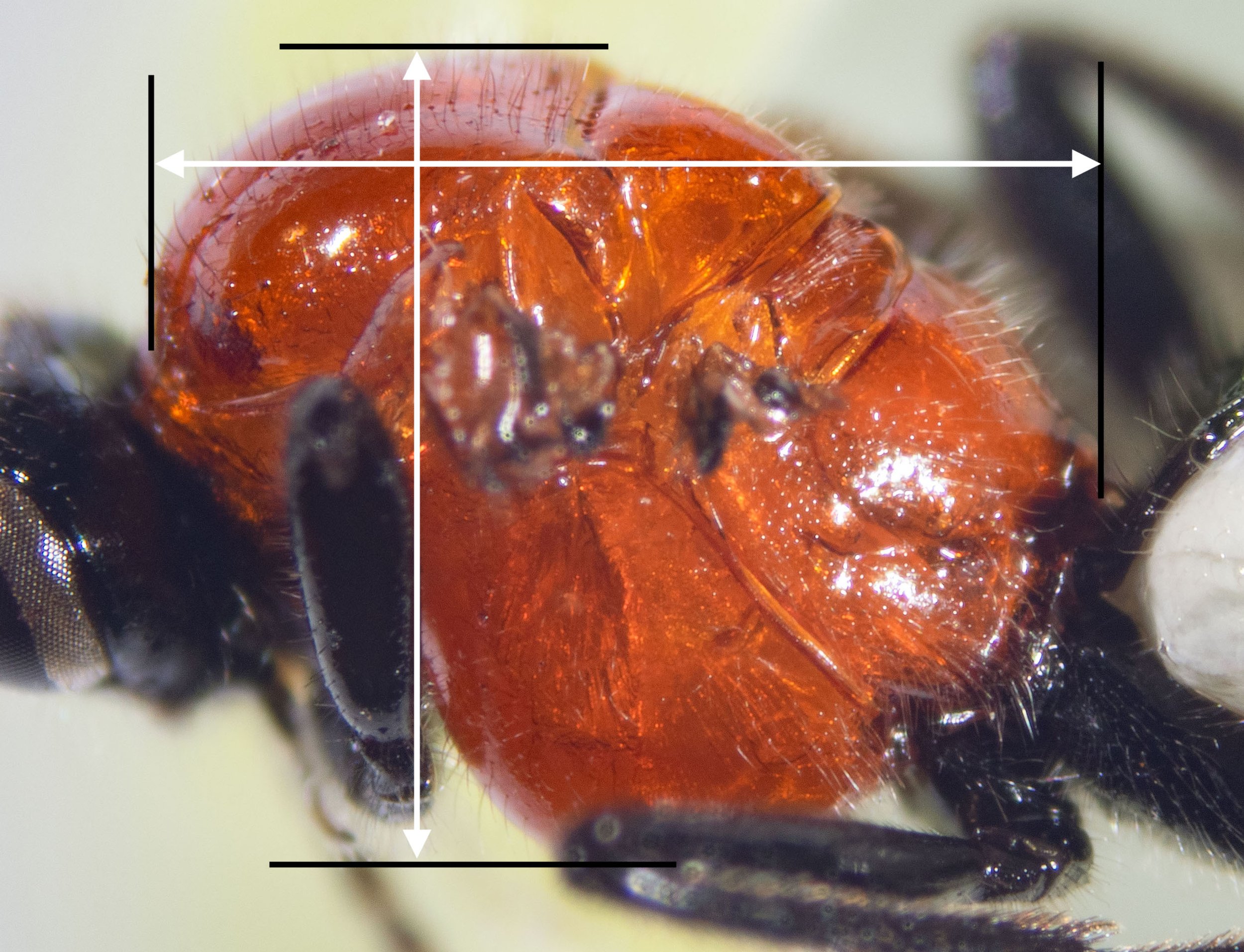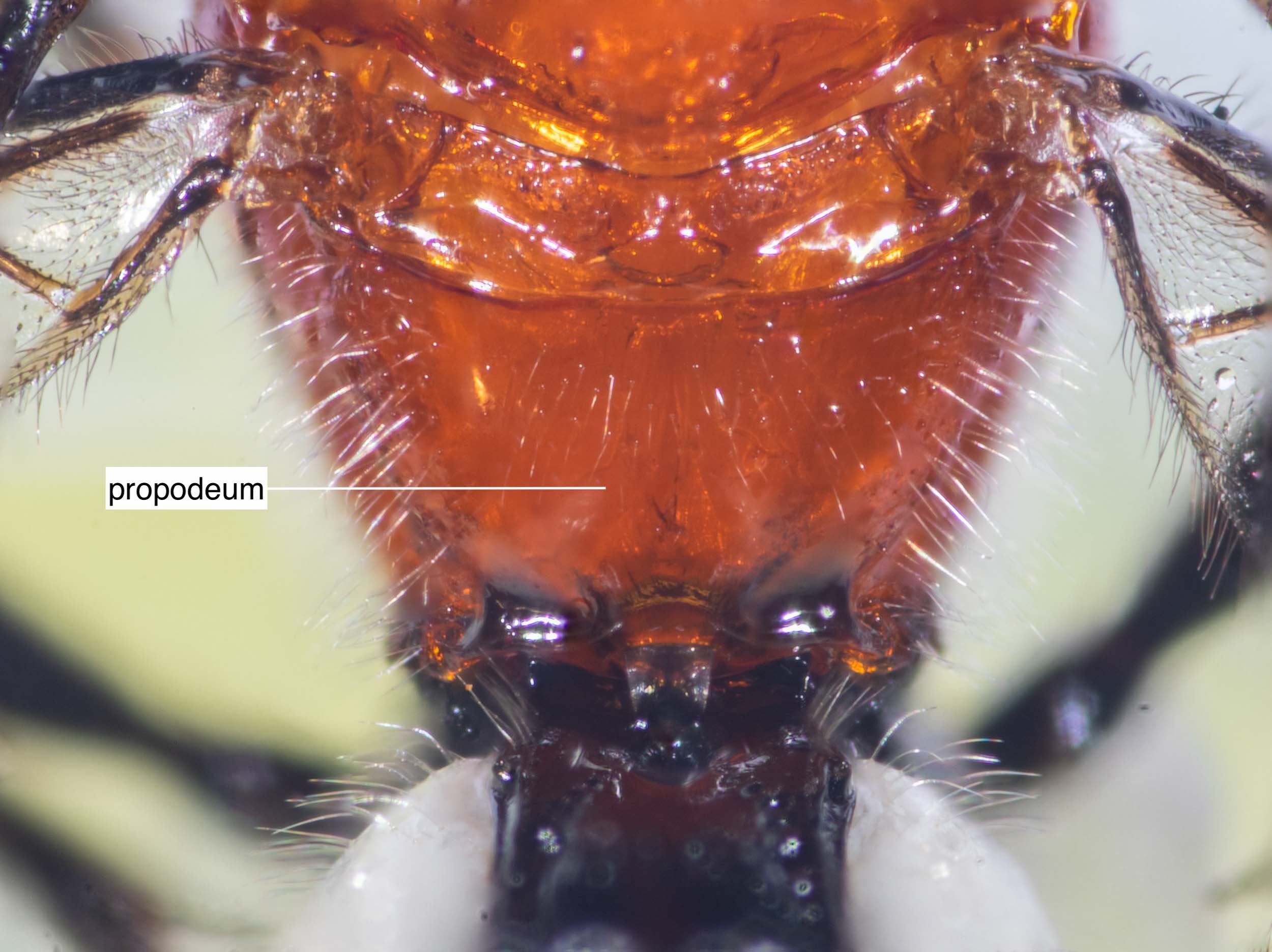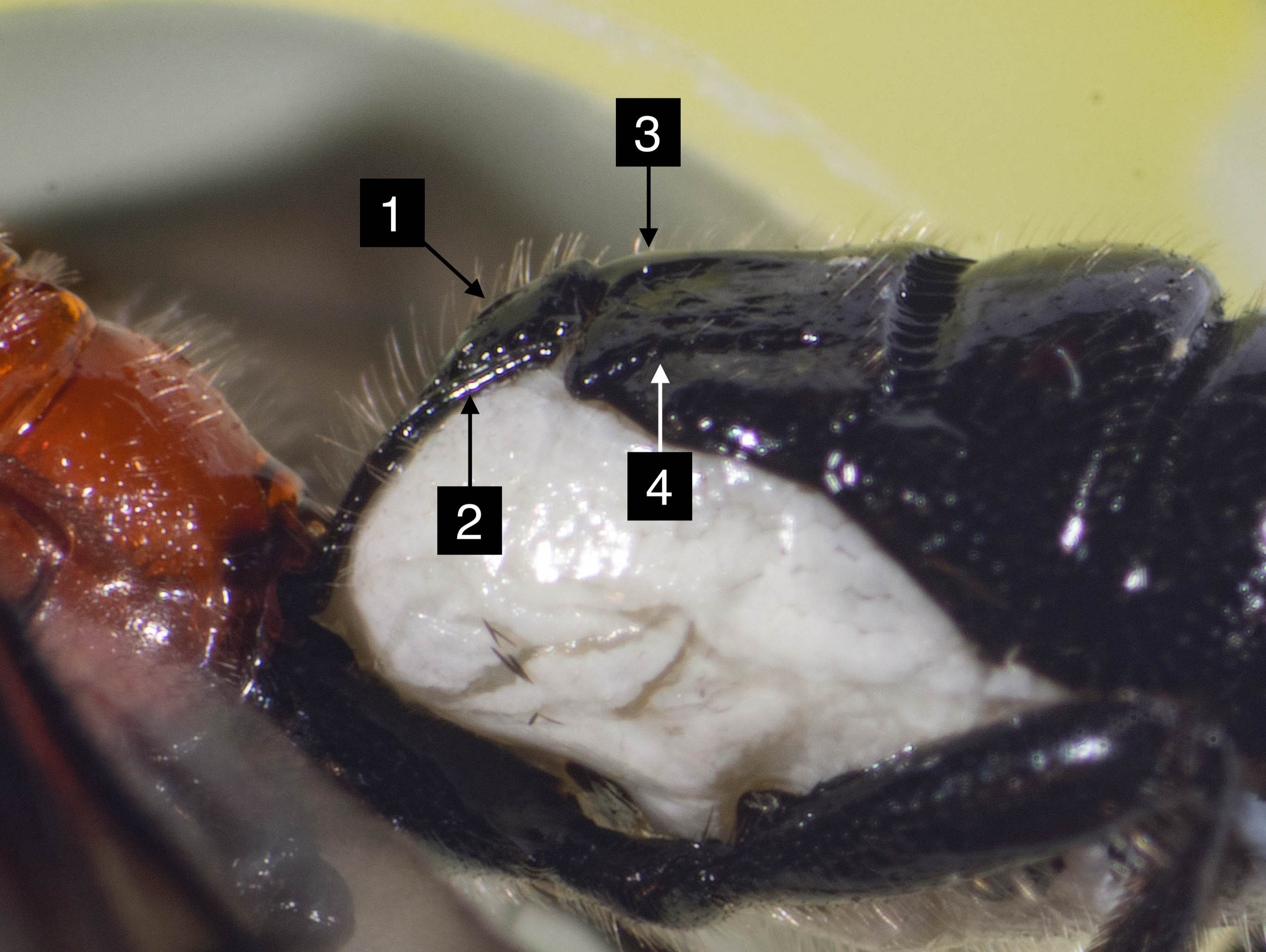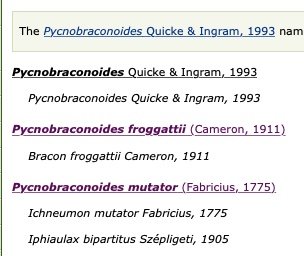
ANTENNAL LENGTH (right flagellum intact, left missing tip)
Total length = 6mm (or slightly more). 44 flagellomeres. Terminal flagellomere pointed (‘acuminate’).

FOREWING LENGTH (scale in mm)
Forewing nearly 7mm in length.

SCAPE (left antenna, viewed laterally)
Short, slightly longer dorsally than ventrally.

FRONS & ANTENNAL BASES: (viewed antero-dorsally)
Scape not apico-medially emarginate.
Frons with a well-developed mid-longitudinal sulcus.

FACE & MANDIBLES (viewed antero-ventrally)
Mandibles ivory-white, except for darker apex. Face smooth & shiny, setose.

EYES & MANDIBLES (viewed anteriorly)
Mandibles ivory-white, except darked at tip. Eyes with setae & emarginate (arrows).

HEAD & FRONS (viewed dorsally)
Frons (arrows) densely hairy, impressed medially.
Head very transverse.
Note: I don’t know how to interpret the following statement:
”horizontal length of eye approximately 2.5 times longer than horizontal length of head behind eye” (Quicke & Ingram, p 320)

SIZE (scale in mm)
Body length = 6.5mm


MESOSOMA (wings & fore tibia/tarsus removed, viewed laterally)
Mesosoma shiny, approximately 1.2 times longer than high.

MESOSOMA (wings removed, viewed laterally)
Mesosoma smooth and shiny, largely glabrous.
Scutellar sulcus narrow, crenulate.
Mesopleura smooth, unfeatured … no precoxal suture/sulcus apparent.
Mesopleural suture smooth.

MESOSOMA (viewed dorsally)
Mesosoma smooth and shiny.
Mesoscutum largely glabrous, except for along line of notauli.
Metanotum without apparent median carinae.

METANOTUM & PROPODEUM (viewed dorsally)
Median area of metanotum not carinate.
Propodeum without carinae.

PROPODEUM (viewed postero-dorsally)
Propodeum without carinae.

FOREWING & HINDWING (wings removed, flattened, viewed ventrally)
Forewing: second submarginal cell long, vein 3-SR 0.7 times length of vein SR-1.
Hindwing: vein 1r-m much shorter than vein SC+R1. Base of wing evenly setose (no glabrous regions).

FOREWING VENATION (wing removed, flattened, viewed ventrally)
Vein 1-SR+M more or less straight.
Vein 2-SR+M short, more or less interstitial.
Veins C+SC+R and 1-SR forming an angle of approximately 75 degrees (dotted yellow circle)
Vein r-m unsclerotized.
Vein cu-a interstitial … (Initially I didn’t know how to interpret ‘interstitial’, but I’ve since found that Quicke (1987) uses the term to describe a clear break in the vein.)

BASE OF HINDWING (removed, flattened, viewed ventrally)
Apex on vein C+SC+R with only one especially thickened bristle. Base of wing evenly setose (i.e. no large, glabrous patches … I don’t think the fold line and bulla count)

HIND FEMUR & TIBIA (viewed retro-laterally / posterior face)
Tarsal claws subequal, posterior slightly longer).
Tibia slender.

HIND TIBIA (leg removed, viewed pro-laterally / anterior face)
Tarsal claws subequal, anterior slightly shorter).
Tibia slender.

METASOMA & OVIPOSITOR (viewed laterally; ovipositor sheath partly removed)
Metasoma short, robust, largely smooth.
T3-5 with posterior margins rounded in profile.
Ovipositor robust, part exserted beyond apex of metasomal slightly shorter than medial length of metasomal tergite 2+3


ANTERIOR METASOMA (viewed laterally)
T1 with: raised median area (1), strongly sloping anteriorly; dorsolateral carinae (2).
T2 with: slightly raised median area (3); anterolateral groove (4).

ANTERIOR METASOMA (viewed dorsally)
T1 with: raised median area (1) sculptured posteriorly, smooth anteriorly; dorsolateral carinae (2).
T2 wide, with: smooth, slightly raised and elongate median area anteriorly (3); anterolateral, sub-parallel grooves (4).

OVIPOSITOR (sheath removed, viewed laterally)
Ovipositor robust and without a pre-apical dorsal nodus. Gradually widens from base to near apex, then narrowing just before tip.

Names list from AFD

Pycnobraconoides mutator
Image from BOLD:
Specimen Depository: Centre for Biodiversity Genomics. Photography & Collector: Graeme Cocks. Specimen identification: Donald L.J. Quicke. Project Manager: CBG Project Management Team
Link to record on BOLD

Pycnobraconoides mutator
Extract from page 35 of:
Szépligeti, G.V. 1905. Exotische Braconiden aus den Aethopischen, Orientalischen und Australischen Regionen. Annales Historico-Naturales Musei Nationalis Hungarici (Zoologica) 3: 25-55

Pycnobraconoides froggatti
Extract from page 339 of:
Cameron, P. 1911. On a collection of parasitic Hymenoptera (chiefly bred), made by Mr W. W. Froggatt, F.L.S., in New South Wales, with descriptions of new genera and species. Part I. Proceedings of the Linnean Society of New South Wales 36: 333-346











SIZE (scale in mm)
Overall length ~ 6mm

SIZE (scale in mm)
Forewing nearly 7mm in length

SIZE (scale in mm)
Antennal length = slightly more than 6mm









































